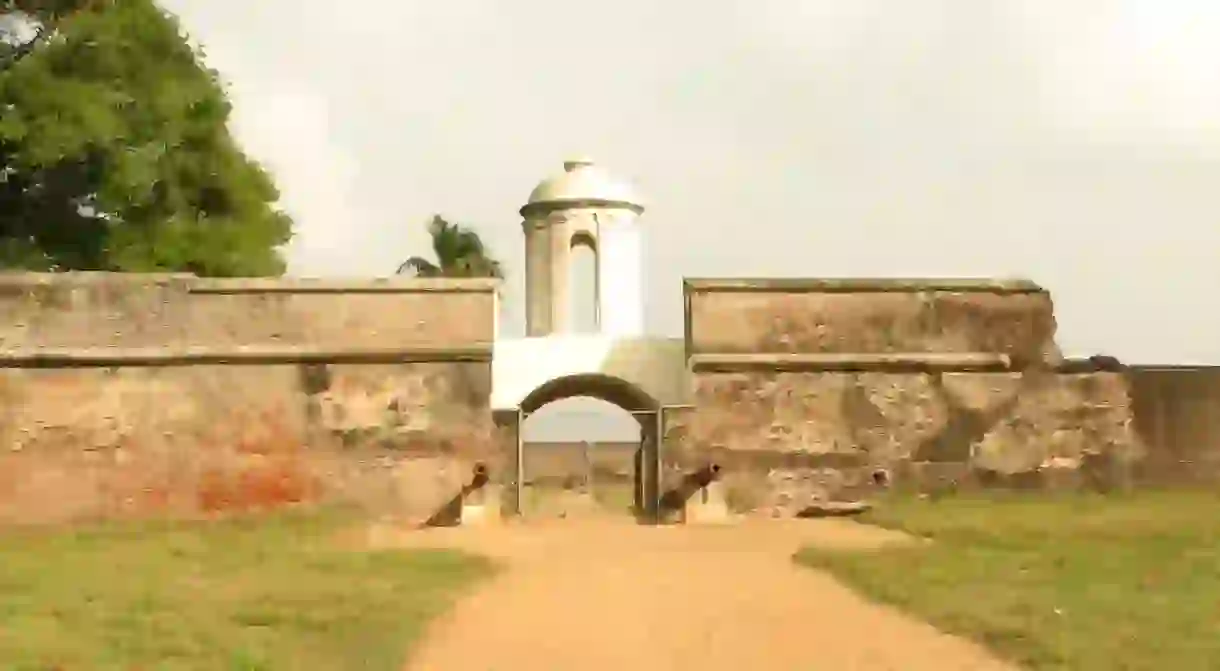The Story of Sadras and Chennai's Dutch Heritage

The British left plenty of marks from their colonial heritage in Chennai, but not many know that the coastal areas surrounding Chennai were once the center of Dutch colonial power on the Coromandel Coast, and boast a rich Dutch heritage still evident today. A key example is the hidden coastal fort town of Sadras, located on the scenic East Coast Road, just south of Mahabalipuram. While the fort itself is in near-ruins today, its enchanting high walls, centuries-old halls, and a lone cemetery remain as one of the last remnants of Chennai’s Dutch heritage.
The Birth of Sadras
During the first half of the 17th century, England was locked in a heated feud with the Netherlands for control over trade in southern India, particularly the Coromandel Coast. Thanks to an already established fort at Pulicat (Fort Geldria) and a sound financial system, the Dutch were poised to be the dominant colonial power on the Coromandel Coast. To expand their business and facilitate trade, the English (later British) and Dutch East India Companies set up two new establishments, both later accompanied by forts. The English town, built around Fort St. George, is what we know today as the city of Chennai. The Dutch one, built around a muslin cloth factory, and later a fort, was named Sadras, after the area’s original name – Sadurangapattinam.

Fort Sadras
Originally a weavers’ village, the town was immensely popular for its muslin cloth and also a flourishing brick-making industry. To take advantage of this, the Dutch first built a factory at Sadras and started exporting high-quality muslin from Sadras to Europe. Once trade starting booming, the Dutch felt the need to fortify the town, and built a magnificent fort that stands today as Fort Sadras. The fortress featured high walls and included within its compound a granary, stable and a beautiful cemetery that still holds graves with impressively carved tombstones marked between 1620 to 1769. Fort Sadras was later immortalized as the location where the Battle of Sadras, the first confrontation between the English and the Dutch East India Companies, was fought in 1782.

Apart from the booming muslin trade, Sadras was also a crucial supply point for bricks, which were used to build the other Dutch forts in both the Coromandel Coast and Ceylon. But Dutch hegemony in the area was not to last, and soon the English came out as the undisputed colonial power in these waters.
Fort Sadras remained under the control of the Dutch for more than a century, but was raided and taken control of in 1818 by the British – an incident that resulted in extensive damage to the beautiful commercial fort.
Sadras Today
After the end of Dutch control, the fort fell into disrepair and lost most of its features and fortifications. However, Chennai’s quick post-Independence development soon reached the towns surrounding Sadras, and a nuclear power station was built close to it at Kalpakkam. Development and maintenance of the fort came under the control of the Archeological Survey of India (ASI), which has continued slow and diligent repair work on the fort for years. Today, this magnificent fort remains under the shadow of the atomic power station and attracts few tourists, if any. But that is not to say that this historical monument has lost its charm.
A visit during November/December, when the clouds stanch the sun, allows for the best views of the Bay of Bengal. The dilapidated gate of the fort still holds a belfry on top, and entrants are welcomed by a rusty cannon standing in defense of whatever’s left inside.

A walk past the structures for elephant mounts and the long-abandoned halls for dining and dancing will lead one to the ramparts of the fort overlooking the azure blue waters. Fashioned from bricks made at the local kilns, these tall fortifications still stand, even with the enemy long gone. The climb up is tricky, but for those who make it, the view it offers is straight out of a picture book.

With hardly any visitors knocking on its doors, there’s little incentive for the ASI to repair, and much less renovate, the fort. But over the years, nature has added its own decorations, in the form of walls of coconut trees and scattered mounds of greenery. The grass flourishes unhindered within its walls. After all, only the graves at the cemetery call this fort their home now, and the dead don’t care much for lawn maintenance anyway.
📅 Open Monday to Sunday 7AM-6PM













